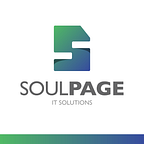Deep Learning To Elevate Visual Inspection In Manufacturing
Visual inspection in manufacturing taking over the mundane and complex tasks; (like inspection of internal and external assessments of equipment, including storage tanks, pressure vessels, and more). Automating visual inspection practices reduces the routine manufacturing process faster and cheaper. Automating inspection of automobile parts, electronic components, building materials, raw materials, finished goods makes it a more reliable technique for manufacturing for optimizing product quality, and experiencing better ROI.
Visual inspection can amalgamate routine manufacturing tasks by eliminating human errors and promoting enhanced business outcomes. Automating visual inspection increases the growth of technology in manufacturing, and it is driving the vision of industry 4.0. And with this technology in place, manufacturers look for new levels of efficiency and productivity.
Automated Visual Inspection Defined.
Automatic visual inspection is an end-result of the integration of machine learning and computer vision technology to reinvent the process of routine human inspection. The end-to-end programmed automatic visual inspection system can significantly reduce the risk of poor quality inspections and lead to reduced manufacturing costs over time. Computerized visual inception mitigates the most common errors by automatically checking defects in the production line (e.g., contaminations, scratches, dents, or deformations caused by faults in production). The machine learning process is integrated with the computer vision to process the minute layers of products to identify the faulty products, machine functioning difficulties, shop floor assistance, and more.
Computerized visual inspection inception effectively removes human errors that typically range from 20% to 30% on an average day.
How Does Automated Visual Inspection Works?
The AI-powered visual inspection system is a decision-based model powered by deep learning and machine learning technology to analyze real-time processes and automatically discard defective items or mark them for further human inspection. The well trained AI model processes the images, video frames, text from video surveillance systems to process this information through deep neural networks. It will read and analyze the fed data and compare it with trained data sets to portray the expected results.
For instance, here is the functioning of an automated visual inspection model to identify the defective products in an assembly line:
- The data processing system feeds the model with real-time images and moves them at a constant speed.
- The optical system captures images inspected to process and analyze them.
- The separation system identifies defective products and separates products into several categories based on their quality.
How is Deep Learning Reinventing Visual Inspection?
The advanced applications of Deep Learning and AI can efficiently transform every industry domain. And the same applies to the manufacturing and production industry. Upgrading manual visual inspection is fulfilling all the requirements of quality control and enhancement. Below listed are ways of how Deep learning automates the process of visual inspection.
- Deep learning technology uses neural network techniques to train the computerized visual inspection systems with thousands of images/video frames to detect meaningful deviations from standard appearance.
- The deep neural networks improve the accuracy of the visual inspection model when they are exposed to new data sets.
- Computer vision makes automated visual inspection more reliable by recognizing images, distinguishing trends, and making intelligent decisions.
- Deep learning and machine vision together enhance visual inspection in performing quality checks in great detail.
- The AI and Computer vision to make the visual inspection models more reliable by analyzing complex surfaces and cosmetic defects, like scratches or dents on parts that are turned, brushed, or shiny.
The Unveiled Power of Automatic Visual Inspection In Manufacturing.
The manufacturing industry is one of the prominent sectors. With advanced image analysis algorithms and heavy programming the automated visual inspection process images to adjust their quality to locate the focal point to identify the quality of the product and to make qualified decisions. Automatic visual inspection systems are reliable, accurate, independent of the environment. Integrating this model makes manufacturing operations extremely fast and unnecessary labor costs. Moreover, the automated visual inspection systems always deliver a custom solution tailored to the specific inspection needs.
System Implementation
Automating manual visual inspection model doesn’t require a lot of physical equipment. The hardware only requires a feeding system, an optical system, and a separate system to process the humongous volumes of data in real-time. The training on a regular basis makes the system more accurate in making reliable decisions.
Automating Inspection
Inspecting the assembly line is one of the crucial practices for a manufacturing business. Today most businesses still follow manual inspection techniques which are time-consuming and affected by human errors. And below listed areas are where the automatic visual inspection can make the difference to optimize costs and scale production operations.
On a production line, an automated visual inspection model can inspect infinite products pixel-by-pixel per minute reliably and repeatedly to exceed the capabilities of human inspection. The deep neural network can process the images of products that are visually similar in a short span to optimize the inbuilt decision-making models. Below listed are a few examples of how automating manual inspection can be helpful.
- Inspect automobile parts for defects.
- Identify defective products on the assembly line.
- Inspect cars for surface defects.
- Detect defects on VLSI wafers.
Automating visual inspection widening the scope of manufacturing qualified products. The reliable autonomous technique mitigates routine manufacturing challenges like machine ideal time, shipping faulty products, unexpected machine breakdowns, shop-floor inspection, etc. virtual visual inspection solves your inspection problems by leveraging a combination of multiple deep learning techniques like image segmentation, object detection, image classification, and OCR. Leveraging visual inspection guides manufacturers a step close to smart manufacturing. And using machines to make visual inspection allows humans to operate on more sophisticated tasks to optimize manufacturing outcomes.
Originally published at https://soulpageit.com on October 23, 2020.
